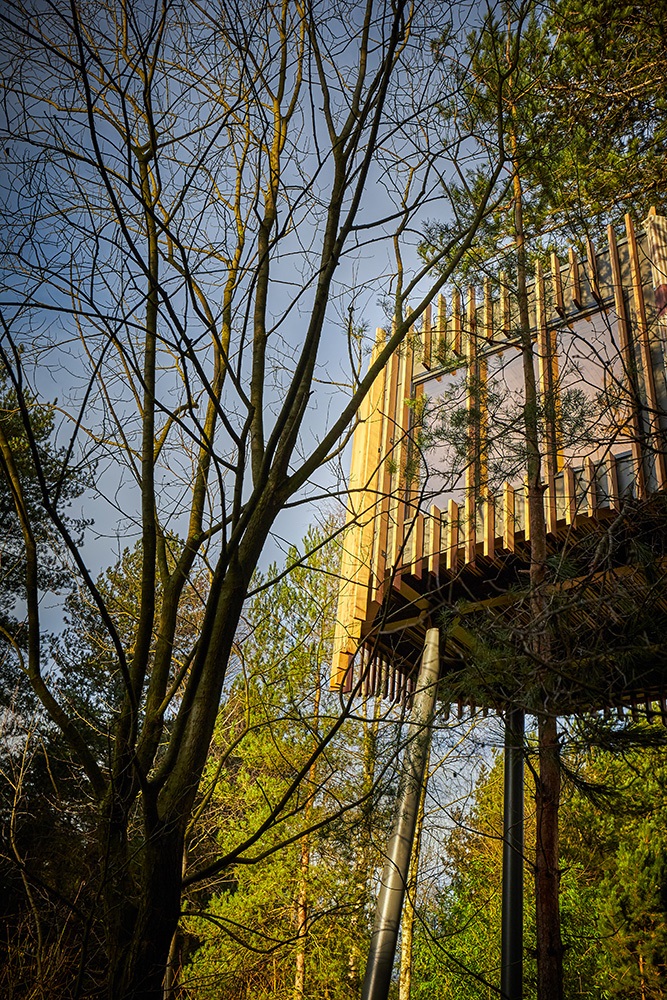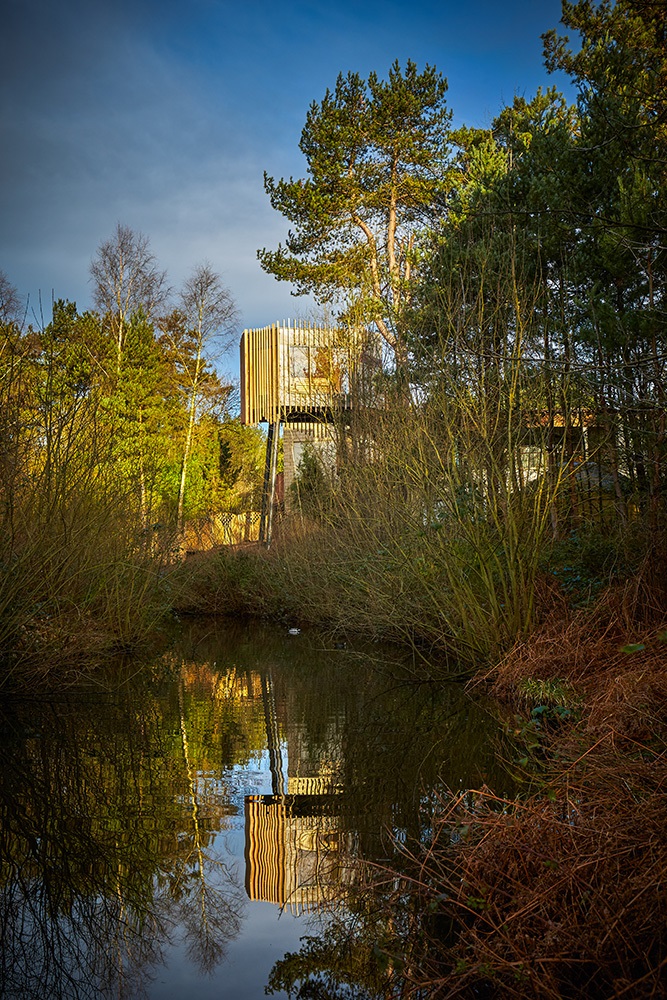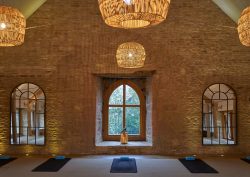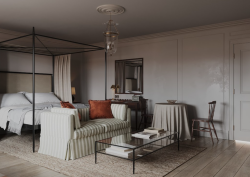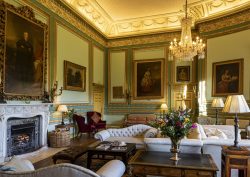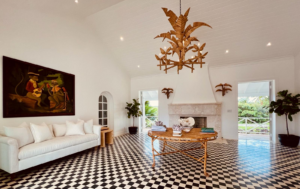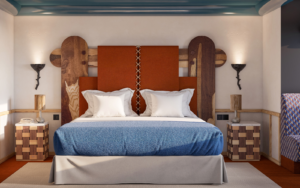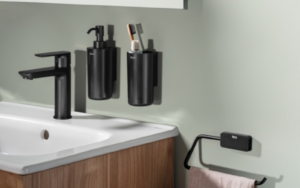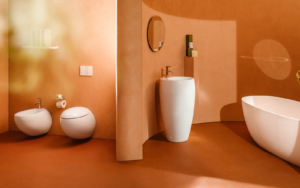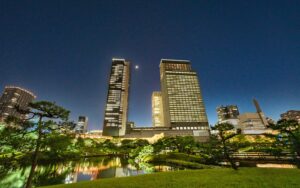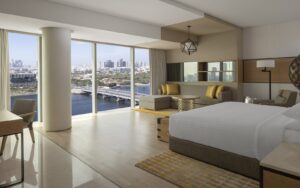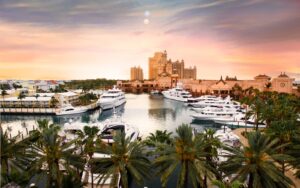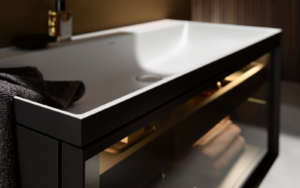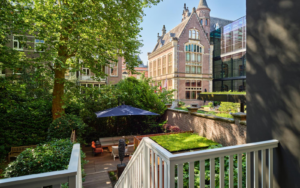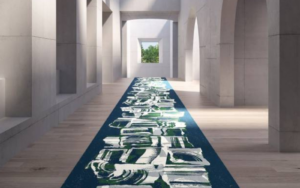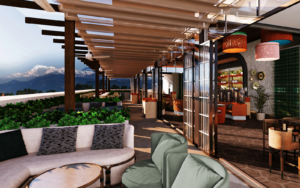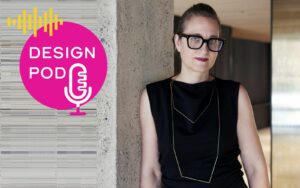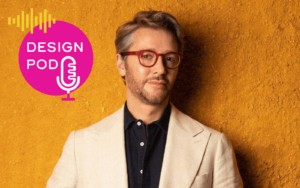Sparcstudio an independent, creative design studio specialising in spa and wellness design for over 15 years in the spa, wellness, fitness, hotel, and resort sectors has announced its key trends in spa design for 2023. Creative Director, Beverley Bayes talks us through the trends…
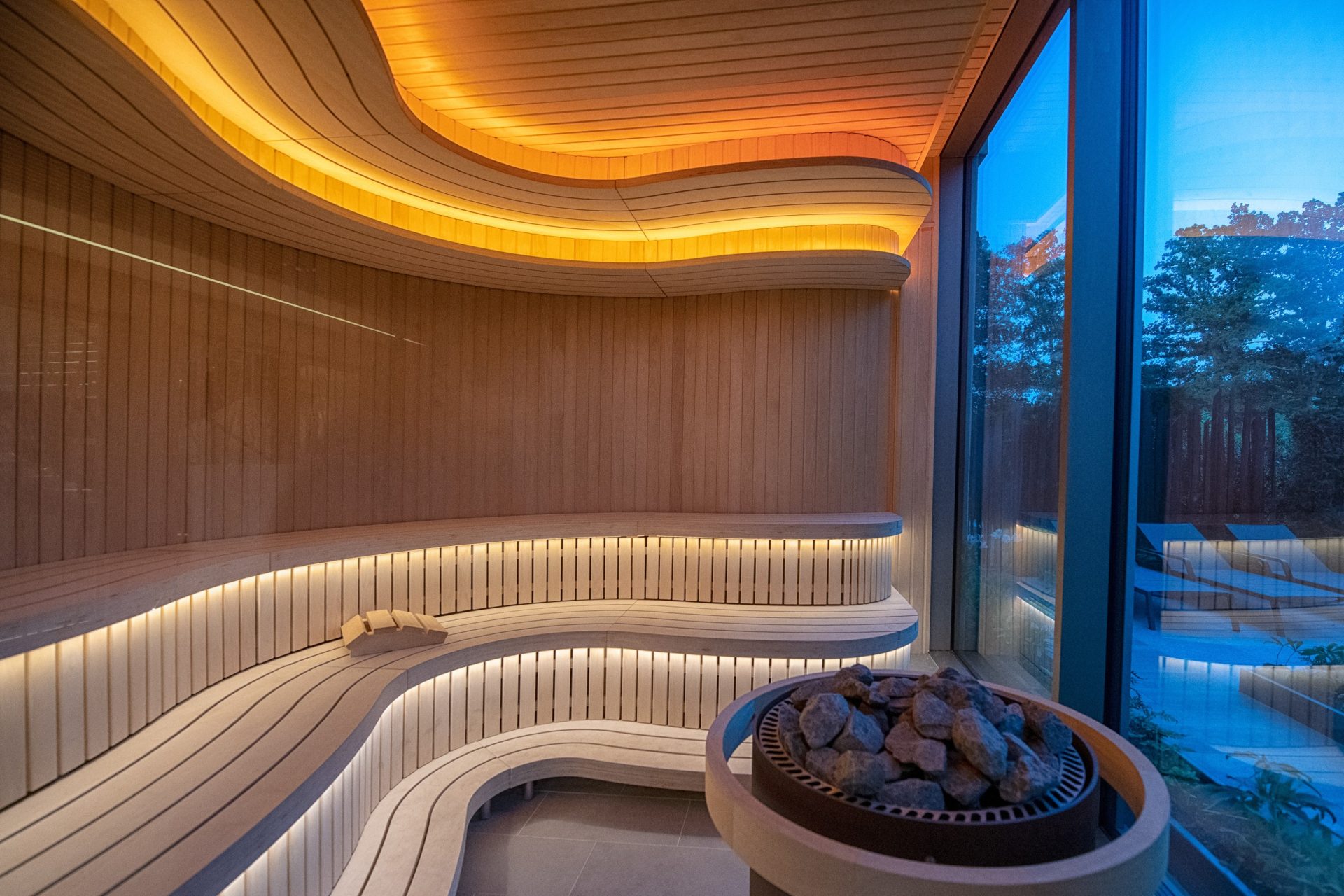
It’s an incredibly exciting time in the world of spa design. Hoteliers, developers, and the general public are much more spa savvy and want to enjoy the benefits that spa can bring, with a great focus on improving physical and mental health and wellbeing. For operators and owners, this not only raises the profile of the business and places it the forefront of innovation, enhancing facilities with considered, sustainable design is good business sense and correctly done can significantly improve revenue and return on investment.
Sustainability in spas has been firmly in the spotlight for some years, but it is now that we are seeing the true innovation in terms of sustainable materials and finishes that are available. It’s akin to the effect that the introduction of LED lighting has had in spa/interior design.
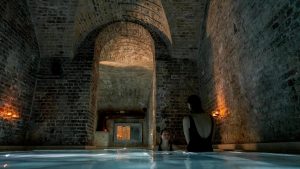
Image credit: Sparcstudio
Last year more than any other we were excited to discover a range of UK based companies producing a wealth of sustainably sourced and innovative products. Many of these sustainable materials also have health and comfort benefits, including reducing noise, providing thermal insulation, and are non-toxic or boast low VOC’s emissions. Increasingly, clients recognise the need to create sustainable environments, and this is also important to discerning customers who are also demanding this approach.
Examples of beautiful and sustainable materials that we are currently specifying include clay based wall renders which is natural and non-toxic, with low VOCs emissions and no synthetic, concrete or lime additives and made from readily available, naturally abundant materials. Countertop surfaces formed from waste plaster and wood chips and eco paint ranges with low VOC’s are also on on the list. Hemp fibre building products produced on a farm outside of Cambridge is presenting some exciting alternatives.
Cork flooring in the form of a refined plank type product utilising waste cork from cork forests and bottling plants in the Western Europe that have the added benefit of thermal insulation and noise reduction, while improving air quality. Natural linen looking textiles and rugs that are made from recycled plastic bottles but are highly durable are also perfect for spa use. We are also endeavouring to specify a lot less laminate and are instead opting for solid timbers, and reclaimed English ash, salvaged from tree felling resulting from Ash Die back disease in the UK.
Whilst connection to nature will continue to be a central theme for spas, as witnessed by the huge rise in spa gardens and forest bathing, we are also anticipating a rise in the design of truly ‘immersive’ spa interior spaces and experiences.
Advances in technology, many as result of video art installations in galleries, will see the use of back and front projected imagery to floors, ceilings and walls. When this is combined with heat or hydro pools, a yoga studio or spin class it can create a totally unique environment. This can be witnessed at QC Terme Milano ‘secret spa’, which has multiple immersive experience rooms including a ‘rain room’ with rain showers, immersive video skyscape of stormy skies located around a submerged hydro pool.
Virtual reality experiences are also on the rise where guests can take a guided meditation in a beautiful landscape as part of a spa experience. Relax VR transports clients using virtual reality by catering to three of their five senses – sight (visual scenery), sound (music) and smell (essential oil scents). Combining Relax VR with a treatment that caters to touch, such as a foot soak or hand massage, and adding an element of taste, such as a coconut water, creates a full multi-sensory experience.
Examples of more ‘physical’ immersive spaces can be experienced within the Aqua Sana Forest spas created by Sparcstudio, where guests can gaze out over panoramic views of the forest canopy in the Treetop Sauna, or listen to the trickling water in Longleat’s Forest Cavern or gaze up at the magical changing sky as it phases from dusk to dawn to daylight in the Forest Meditation room.
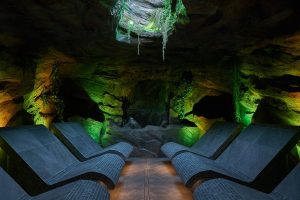 Intuitive design for wellness tech
Intuitive design for wellness tech
With the growth of technology in spas, including the recent rise in Hyperbaric Oxygen therapy and cryotherapy machines, careful consideration needs to be given to the design of the spa to accommodate large equipment like this. Physically, they take a lot of floor space, but more importantly spas need to ensure that these facilities remain a luxury experience in keeping with other elements of the spa.
Firstly, the space needs to be sized to be large enough for guest comfort. We would also look to create a totally immersive environment for the equipment to integrate them into the overall experience. For high ticket treatments such as these, the experience must be elegant and luxurious.
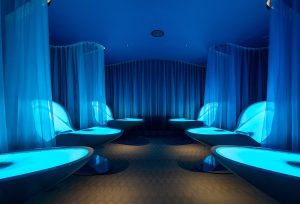
Image credit: Sparcstudio
This type of immersive environment can be experienced at Cottonmill Spa Sopwell House. The deep relax room houses six multi-sensory AlphaSphere by Sha loungers. The undulating up lit sheers surround the perimeter of the room, cocoon each bed and create an immersive dynamic space, enhances the guest experience, whilst maximising the substantial investment that has been made in specialist equipment such as this.
Inspired by ancient traditions of Greek Roman and Ottoman empires, the ‘Modern bath house’ spa concept is also set to be a strong trend for 2023 and beyond. Olympia Bath House in Melbourne is due to launch later this year and is set to offer ‘Thermotherapy and immersive experiences that inspire a sense of slow and social connection.’ This is taking urban wellness to another level.
The social aspect of the modern Bath House is a key element of this model and is reflected in the membership packages, which encourage greater usage than a traditional spa and typically much longer opening hours too. For example, the Aire Ancient Baths in London’s Covent Garden opening hours are 8am to 11pm.

Image credit: Sparcstudio
These Bath houses can also bring spa to the sometimes ‘spa deprived’ Urbanites – The AIRE Experience always takes place in restored brick vaulted subterranean historical buildings in the centre of cities and with atmospheric candle lit pools and thermal experiences. Modern Bath houses encourage ‘slow’ spa experiences and are about reconnecting and escaping from technology.
Sparcstudio has identified these trends playing out in their bespoke design approach to all elements of every project, including pools, thermal experiences, treatment zones, luxury changing rooms, relaxation spaces and café restaurants, fitness areas, and Spa suites as well as accommodation. The studio always aims to create a unique product with a real ‘sense of place’, individuality and luxury and an elevated guest journey and experience.
Main image credit: Sparcstudio

